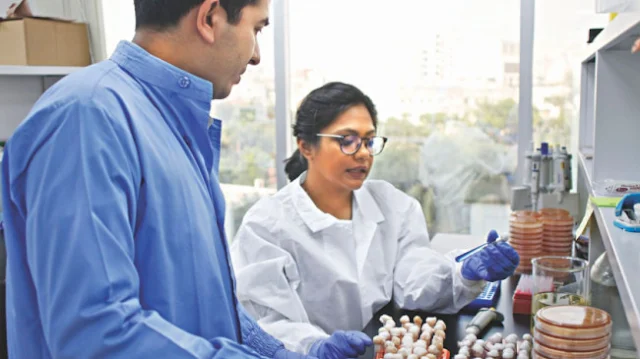We need a beautiful environment for the living organisms to live. As a result of the Industrial Revolution in 1760, human civilization has gradually progressed. But on the way of this era of the Fourth Industrial Revolution, the mankind has caused the most damage to the environment.
There is industrial waste, sewage waste, tannery waste, water pollution, soil pollution, air pollution etc environmental issues in everywhere. Nowadays scientists are trying to solve those issues with the help of bioremediation, biological treatment etc processes and in many cases they succeeded. Metagenomics can make those processes more effective.
What is metagenomics?
Metagenomics which is also known as 'Environmental Genomics, Ecogenomics or Community Genomics'.
Metagenomics is comparatively a new technique discovered in biology. Which was born at the beginning of the twenty-first century.
Since then the interest of the world scientific community continues to grow in diverse branches of science, such as medicine, biotechnology, agriculture or genetics, as well as in this field.
The term 'metagenomics' is a combination of the words 'meta' and 'genomics'.
Where the word 'meta' means all the organisms present in an environment or culture. And the word 'genomics' means to study or analyze the genome; that means to sequence the genome. Simply, Metagenomics is the process of collecting microorganisms from a sample of the environment and analyzing them in detail by extracting their DNA sequences.
Metagenomics is a subsidiary technique in biological research. Whenever we are working with many microorganisms and cannot separate one microorganism from another, then we will use the metagenomics technique.
How does metagenomics process occur?
Here are some necessary steps to conduct a metagenomics analysis:
(1)Collecting sample
Samples are collected from soil, human gut, waste water, Ocean, Industrial waste and many more.
(2)DNA sequencing
DNA sequencing is the process of arranging all the genetic codes of an organism one by one. Before sequencing genomes are unknown. Through sequencing short DNA reads can be obtained.
(3)Assembly
In this step the sequenced genomes are assembled. Then researchers use software where assembly algorithm transforms sequenced genome short reads into 'contig'. A contig (from contiguous) is a set of overlapping DNA segments that together represent a consensus region of DNA. Bioinformatic data analysis helps to highlight common patterns among microorganisms.
(4)Binning
DNA sequences are grouped,Where every group represents an individual genome. Each contig is assigned to a genome. So that most of it can be recovered.
(5)Annotatation
Scientists review the collected data. Using these data, they predict about genes, species and they identify gene functions. By identifying the pros and cons, they take decision about where those new genes can be used.
(6)Analysis
In this step, researchers represent the content of their research through graphs, charts, tables.
(Some necessary steps of Metagenomics process)
(Dr Senjuti Saha; Source: The Daily Star)
(you can watch Senjuti saha's speech on gates foundation from 6 number reference link)
Also using this process, researchers can analyze the diversity among microorganisms, identify new proteins, enzymes and biochemical pathways.
To identify new and beneficial genes from the environment and produce new antibiotics, To produce new products by identifying biodegradable enzymes metagenomics is necessary.
Limitations of metagenomics process
Massive Genome sequencing projects are still very expensive. Assembling DNA short reads is impossible for medium or high diversity communities. Metagenomics identify polymorphism (different variants) present in natural communities, which makes sequence assembly even more difficult.
There are many effective methods of next generation sequencing, then why do we need metagenomics?
It has been estimated that, less than 1% of the organisms (bacteria, virus) present in nature can be cultured in the laboratory by available techniques. In this case Metagenomics process can be helpful.
In the case of metagenomics we are standing now at the beginning of a new era. Our younger generation can take this technique move forward and can build a rich database.
References:
[1]https://en.m.wikipedia.org/wiki/Metagenomics
[2]https://www.ncbi.nlm.nih.gov/pmc/articles/PMC3351745/
[3]https://youtu.be/Yo4OWpgOsMU
[4]https://www.genome.gov/genetics-glossary/Metagenomics
[5]https://www.thedailystar.net/star-weekend/news/how-cloud-based-database-can-help-diagnose-illnesses-1661281?amp




